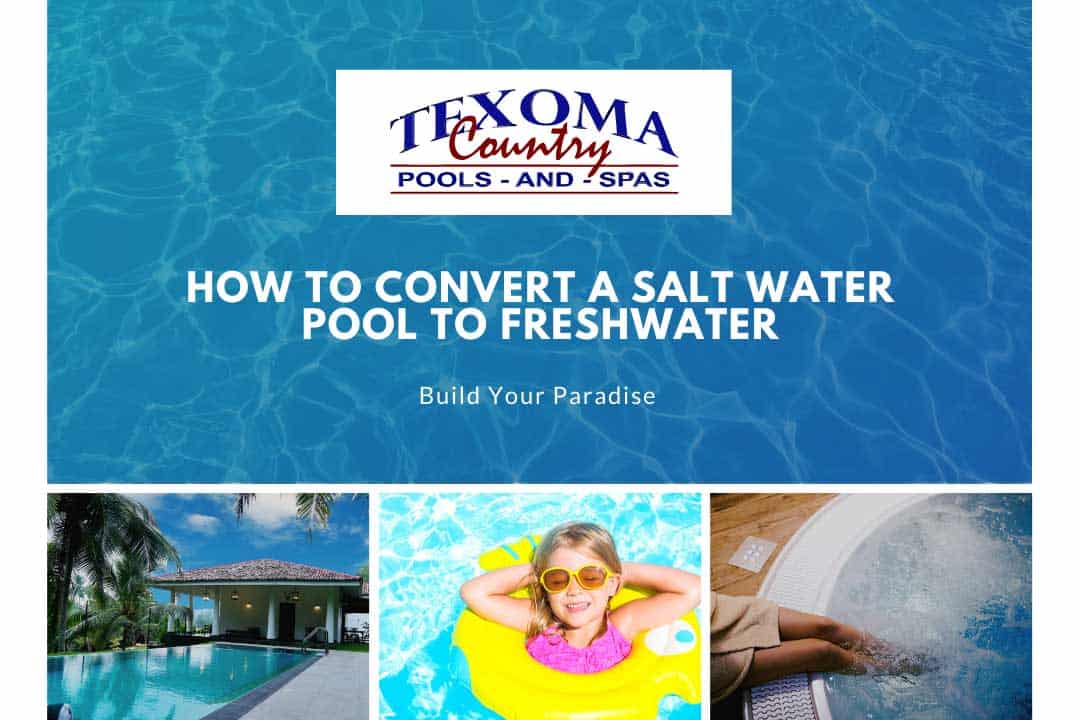Maybe you’ve recently purchased a salt-chlorine generator for your swimming pool but found it wasn’t exactly what you were looking for.
Whether it’s because it caused rusting, or you found the replacement cell costs to be too high, there are several reasons you might want to go back to traditional chlorine. Doing this will require a few steps, so here we’ll guide you through what you will need to convert back to a freshwater pool.
Draining Your Pool
You will need to partially drain the water from the pool, so when freshwater, it will reduce the cyanuric acid levels. Cyanuric acid is a stabilizing agent that protects your chlorine from solar degradation.
A traditional chlorine pool’s levels of cyanuric acid need to be at about 40 parts per million, and salt pools have nearly doubled those levels, if not more. While chlorine will eventually dissipate, the same cannot be said for cyanuric acid, hence why draining is necessary.
You will need to calculate how much water you need to drain to reach 40 ppm. After you’ve finished draining, refill your pool using freshwater, and, given the calculations are correct, you should have the right cyanuric acid levels for a freshwater pool.
Continue Checking Your Pool Chemistry
Make sure to continue checking your pool’s pH levels, hardness, and alkaline levels. In addition, you won’t need to worry about using cyanuric acid anymore. The chlorine you’ll be using from now own will already contain a stabilizer.
Do I Need to Worry About Residual Salt?
No, you have no reason to worry about the residual salt. The salt itself never caused damage, as much as the process of electrolysis did. The only way the salt could significantly cause any problems was if it was at the same levels found in seawater, but that would be next to impossible. Seawater has a saline level of 35,000 ppm. Compare that to pool water, which contains only a level of 3500 ppm at a maximum.
How to Choose a Pool Chlorinator
You might be wondering “What chlorinator should I pick?” It is a tough choice, and you’ll need to consider several factors before you decide whether to go with an inline, offline, or floating chlorinator.
Inline chlorinators, as the name implies, fit in line with the rest of your pool equipment. This kind is a good choice if you have the room to add them to your system. Otherwise, you should look at an offline chlorinator, which is retrofitted into the system through a bypass line. In either case, both of these chlorinators need to be placed on the pluming line after the other equipment. Floating chlorinators, on the other hand, will not take up any room on your equipment. They float in your pool, provide a steady flow of chlorine, and are easy to use. However, some are made with thin plastic and are prone to cracking.
Installing New Pool Equipment
This is the simplest step, and will only require three steps. First, power down and unmount the salt chlorinator control unit. Secondly, the flow switch needs to be removed, and the tee tap needs to be stopped. The section will need replumbing, too. Thirdly, remove the cell and you’re finished.
For any further plumbing repairs or questions about chlorinators, contact a Texoma pool company near you.

















